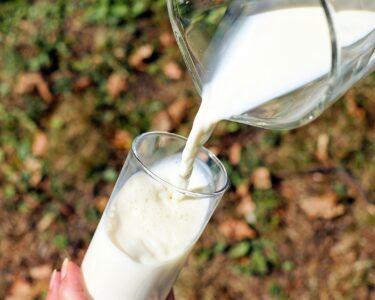It ‘s the “in thing” in diet now. Quinoa is gaining popularity in recent times. It is available in all health food shops, supermarkets, and online stores. Benefits of quinoa have made it famous among consumers who seek an organically grown, hypoallergenic, gluten-free whole grain. The plants are frost-resistant, salt resistant and can be grown in poor quality soils making it an attractive species to numerous food security programs and agricultural researchers as an alternative crop.
NASA has expressed interest in quinoa for its potential to be grown abroad spacecraft to support crews on long term missions. The year 2013 was named “The International Year of Quinoa” by the UN because of its valuable qualities and potential to fight world hunger. If you are new to Quinoa you should first know that it is pronounced as – Keen wah. Let’s discover more about quinoa benefits.

What is Quinoa?
Quinoa is tiny seeds of a tall herb called Chenopodium quinoa. It belongs to the Amaranthaceae family and related to spinach and beet. Young leaves of quinoa plants are also very nutritious and edible. Quinoa is a pseudo-cereal but due to its array of nutritional benefits and the way it can be cooked similar to grains it is known as super grains. Quinoa is native to the high altitudes of the Andes.
This is the most ancient grain and considered sacred by the Inca people. The ancient Incas recognized quinoa as a highly nutritious food that was able to provide energy and improve stamina. It’s well known that Inca warriors carried and ate a highly portable food referred to as “War Balls”, made from a mixture of fat and quinoa. Possibly the world’s first energy bars, which is known for enhancing the soldier’s strength and endurance.(1)
Why Quinoa gained popularity in recent times?
After wheat and Potato cultivations started people slowly forgot the quinoa in South America. This seeds gained interests from agricultural scientists in recent times due to the following reasons-
- Quinoa Can grow in extremely harsh climates, where other crops can’t survive. It can grow in high altitudes (up to 13,000 feet) and also at sea level.
- Thrives in cool temperatures but adapts to extremes, that is from – 8 degrees C to 38 degrees C.
- Grows in dry regions, requiring little water.
- Survives drought.
- Grows in depleted and even highly saline soil.
- Tolerates Frost.
- Needs no chemical pesticide because natural saponin protect the seeds. This resinous coating acts as a self-defense system against birds and insects that would feed on the seeds.
South American countries Peru, Bolivia, and Ecuador are topmost cultivators of Quinoa. Now, cultivation has spread to Kenya, Canada, European countries and few regions in India. White and Red quinoa is commercially available worldwide.
| WHITE QUINOA | RED QUINOA |
| 7 grams protein per 1/4th cup | 5 grams proteins per 1/4th cup |
| 2 grams of fiber per 1/4th cup | 5 grams per 1/4 th cup |
| 170 calories per 1/4 th cup | 180 calories per 1/4th cup |
There are not many differences in other micronutrients in red and white quinoa, however, depending on how much protein or fiber you want to get from your meal you can choose red or white quinoa.

5 Benefits of adding Quinoa in diet
1. Quinoa is a powerhouse of nutrition.
The super status of quinoa is due to its nutritional status. It is a good source of protein with fewer carbohydrates and more healthy fats than other grains. It is extraordinarily rich in minerals like calcium, iron, magnesium, phosphorus, zinc and potassium and Vitamins like folate and vitamin E. It is also high in fiber content.
Quinoa is a good source of high-quality plant-based protein because it contains all of the essential amino acids in good quantity. It is considered a complete protein source because of its protein quality. (2)
Nutrient information of one cup (185 grams) of cooked quinoa.
| Calories | 222 k/calories |
| Protein | 8.14 grams |
| Carbohydrates | 39.40 grams |
| Fat | 3.55 grams |
| Fiber | 5.2 grams |
| Calcium | 31 milligrams |
| Iron | 2.76 milligrams |
| Magnesium | 118 milligrams |
| Phosphorous | 281 milligrams |
| Potassium | 318 milligrams |
| Sodium | 13 milligrams |
| Zinc | 2.02 milligrams |
| Folate | 78 micrograms |
| Vitamin E | 1.17 micrograms |
Source: USDA National Nutrient Database for Standard Reference
2. Quinoa is rich in antioxidants
The research reported in Journal Food Chemistry has shown that the flavonoid content of quinoa is exceptionally high. The two flavonoids found in quinoa are Kaempferol and Quercetin. Surprisingly, these powerful antioxidant contents in quinoa are higher than berries like cranberries which are ranked high flavonoid sources.
Antioxidants have abundant health advantages, they protect against any kind of illness, combat degenerative diseases and potentially contribute to overall life span. (3,4)
3. Quinoa has a Low Glycemic Index
Foods with a low GI Value are digested slowly, releasing glucose gradually into the bloodstream, helping to reduce blood glucose gradually into the bloodstream, helping to reduce blood glucose levels throughout the day and keeping you off the blood sugar roller coaster. Low GI foods have a value of 55 or less, medium GI food has a value of 56-69, high GI value foods have a value of 70 or more.
Quinoa is one such food with a low glycemic index of 53. Low GI foods cause gentle rises in blood glucose levels compared to high GI foods, which cause levels to spike. When blood sugar is high, the body releases greater amounts of insulin to manage it, either by using it as energy, storing it as a form of glucose or converting it into fat. Foods with low GI value is important in controlling the body’s insulin levels, which is critical in preventing and managing diabetes. Due to its high fiber content quinoa in the diet helps to prevent heart disease and type -2 diabetes.
| Cereal | Glycemic Index |
| Quinoa | 53 |
| Millet | 71 |
| Rice (white) | 76 |
| Rice (Brown) | 72 |
| Wheat | 65.7 |
| Amaranth seeds/Rajgira | 107 |
| Buckwheat | 51 |
Source: glycemicindex.com
NOTE: Low -GI foods have a value of 55 or less; medium -GI foods have a value of 56-69, and high – GI foods have a value of 70 or more. GI value of cereal goes down when cereals are being mixed with pulse or vegetables during meal. (5,6)
4. Quinoa is Gluten Free Grain
Gluten is a protein that is mostly found in Wheat, rye, and barley. People with Celiac diseases and gluten intolerance should avoid gluten in their diet. A small amount of gluten can damage small intestine linings of people with celiac diseases, which results in poor absorption of nutrients from foods. The only way to treat such a problem is to eliminate gluten from the diet. Quinoa is a perfect gluten-free option for people with celiac disease and gluten intolerance. (7)
5. Quinoa helps in weight reduction
Due to certain properties of Quinoa, it is considered good for weight loss. Quinoa boosts metabolism and reduces hunger pangs. Quinoa is high in protein, which can increase metabolism and reduce appetite significantly. The high amount of fiber in quinoa helps to feel full for longer. To lose weight you need fewer calories than you burn. So Quinoa is a good alternative in your diet to choose for weight loss. But, quinoa is a high-calorie food so it should be taken in moderation. (8)

How to incorporate Quinoa in your diet?
Quinoa can be very easily included in our diet. You can use it as whole grain, flakes, flour, etc. The outer layer of Quinoa contains anti-nutrients like saponin etc. This gives a bitter flavor to the grain. Check for the variety in which saponin is removed before packing. Soak the grains for 15 minutes and thoroughly wash before the cooking. Quinoa can be easily cooked in 15 minutes like rice. Quinoa can be sprouted to enhance its nutritional qualities and can be added raw in salads and cereals. Quinoa is easily digestible and can be safely taken in your breakfast or lunch or dinner. (9)
Are you missing anything if Quinoa is not accessible to you?
There is a huge craze for any food that comes from a foreign land. Let it be Maize, Oats or Soya People try to adopt these foreign healthy foods in no time. Now, this is the era of Quinoa. If quinoa is not a local food for you then it is common that the supply will be minimum to your nearby stores and it may not be available for you whenever you want. Also, for example in India, 1 kg Quinoa costs around 350/-. This is expensive for obvious reasons as it is grown in Andes mountains and travel so far to get into Indian supermarket.
In this trendy parade, we forget our locally grown nutritious grains and cereals which are equally healthy and nutritious like Quinoa. Take our locally grown rice, millets or Amaranth, all of these are equally nutritious, healthy and gluten-free. Not to forget these very reasonably priced and available all around the year. One of the principles of Ayurveda says that the healthiest food is the kind that is locally produced. So, do not feel bad if you are not including quinoa, please encourage our locally grown grains in our diet.
But, if you can afford and want to try variety in your diet then Quinoa is one of the healthy grain nowadays. Do try different recipes with Quinoa to break the monotony in your diet. If you are new to a place where quinoa is the staple food do not hesitate to include it in your diet as it will be beneficial for you to adjust to local weather.
If you have any clinical conditions like Diabetes, Hypothyroidism and cardiovascular issues, please consult your dietitian and Physician before including any new foods in the diet other than your regular one.

Bottom Line
Rich in fiber, minerals, antioxidants and all nine essential amino acids, quinoa is one of the healthiest and nutritious grain. Studies have proved the benefits of quinoa. It may improve your blood sugar and cholesterol levels and even aid weight loss. Try this naturally gluten-free, delicious, versatile and incredibly easy to prepare grain your cuisine and share your experiences! Always remember moderation is the key. Don’t replace other cereals with quinoa rather bring variety and keep them as a part of your daily diet.






2 Comments